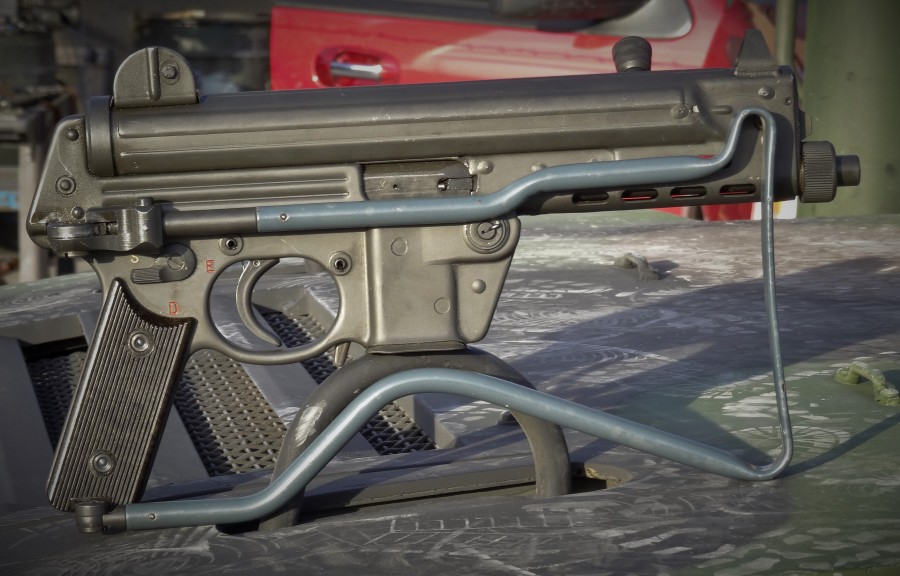
In the summer of 1972 I was five years old. I don’t remember much from that time but I have a fairly good memory of the TV news reports of the Munich massacre, where the Palestinian group Black September killed 11 Israeli Olympic athletes.
One thing that didn’t go unnoticed: the unique Walther MP series submachineguns used by first responding German Polizei units. They looked so sinister. It would take 42 years for me to actually fire one, an opportunity provided by Battlefield Vegas during SHOT Show a few years ago.
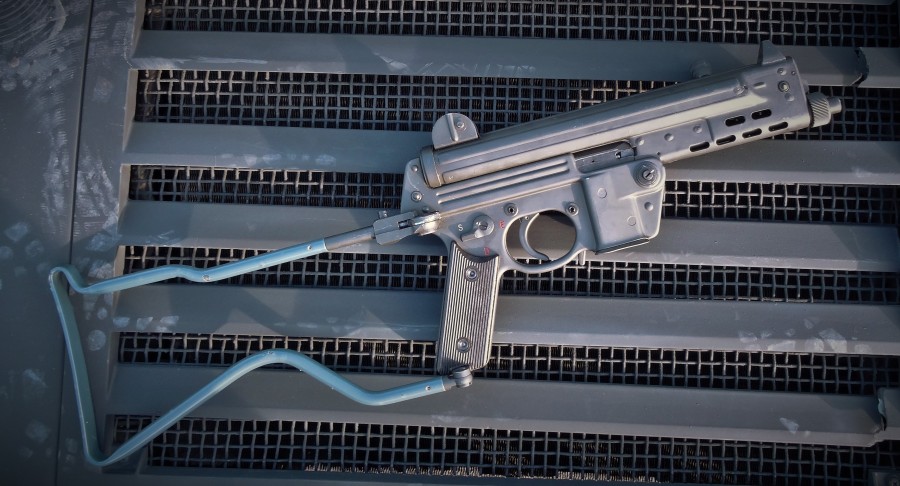
The post-World War II era saw a renaissance in submachine designs, including the UZI, the MAT-49s and Beretta Model 12. Walther saw the need for a for a more light weight design which would be controllable and reliable. The fruit of their labor, the Walther MP series of SMGs, entered production in 1963. A few years later, competitor Heckler & Koch would perfect the SMG via its roller-lock design, producing the iconic HK MP5.
Despite getting to market first, the Walther MP submachine gun would always play second fiddle to the HK MP5. Although Walther secured a fair number of contracts from West German police departments and a few military forces throughout the world, the MP’s was a disappointment commercially. Nonetheless, it remained in production for roughly twenty years.
Interestingly, U.S. special operations forces purchased a small number of MP series SMGs in the late 1960s and 1970s, including 1st SFOD-D and Navy SEALs. The photo below purportedly shows a SFOD-D operator using a Walther MP on the ill-fated Iranian hostage rescue mission:
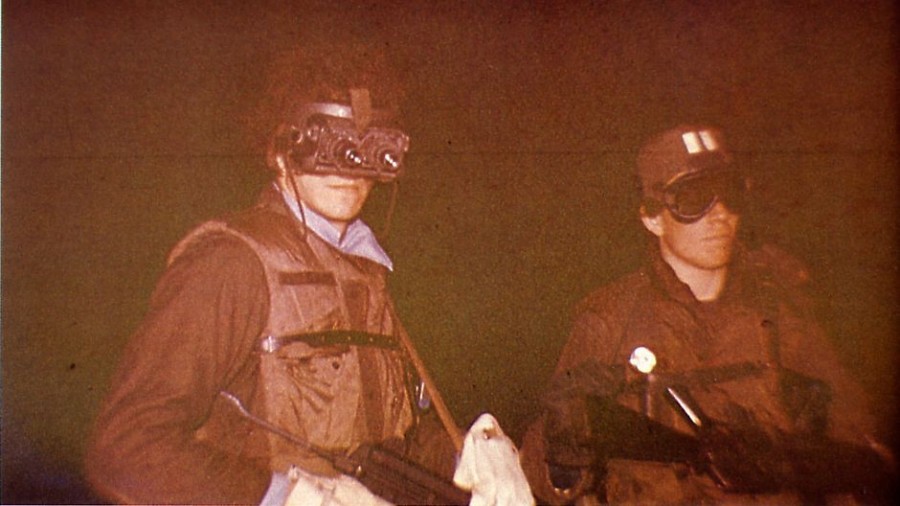
The Walther MP is a select-fire, open-bolt, blowback-operated submachine gun that fires the 9×19 Parabellum cartridge. Rounds are fed via a 32-round box magazine that appears to be based on the Carl Gustaf “Swedish K” stick magazines. On full auto, the cyclic rate of fire is approximately 550 rounds per minute, making the weapon highly controllable. The Walther MP features a stamped steel upper and lower receiver. It’s typically found with a skeleton wire folding stock cloaked in a rubberized covering.
Walther produced two variants of the MP: the MPL (Maschinen Pistole Lange shown above) and the MPK (Maschinen Pistole Kurz shown below). The primary difference between the two is the barrel length. The MPL features a 10.2″ Barrel and the MPK sported a 6.8″ barrel. With the stock extended, the MPL is 29.5″ long (75cm), and the MPK measures 26″ (66cm) long. The MPK was also 1/3 lb lighter than the MPL.
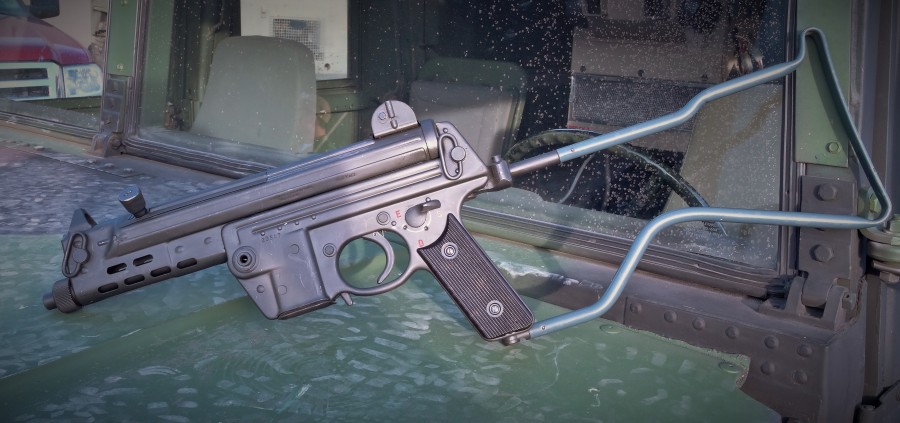
The Walther MP SMG is interesting from a design standpoint for a number of reasons. First, it features an L-shaped bolt which rides partially above the barrel. This design reduces the length of the receiver, as shown in the photos below.
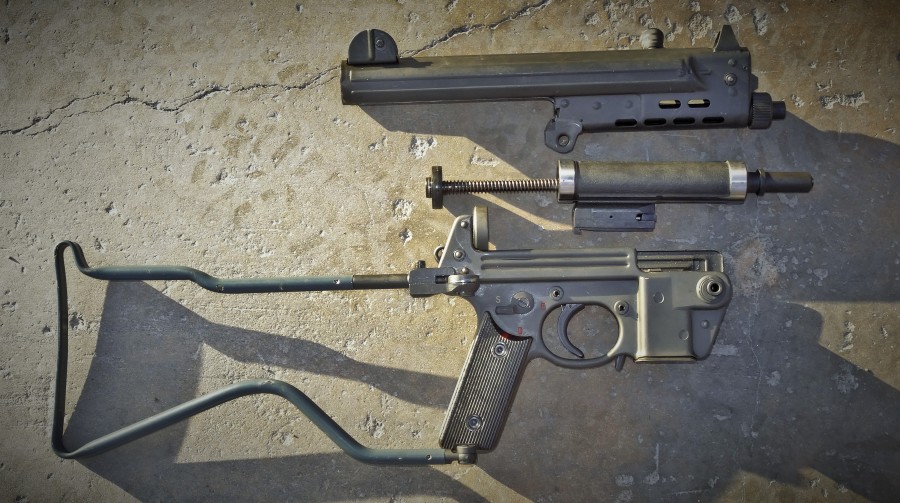
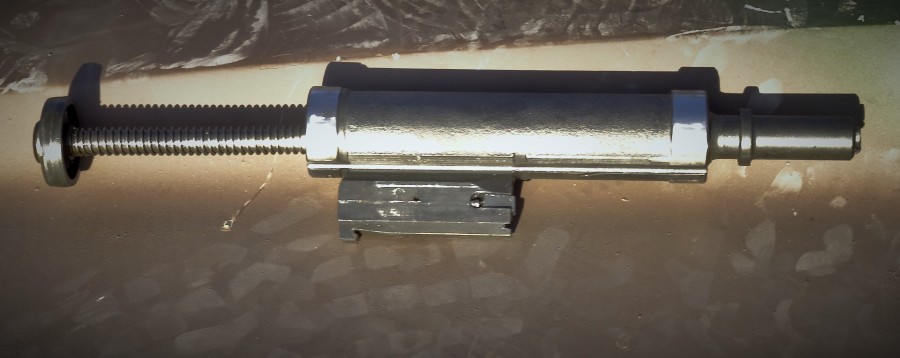
Second, the MP doesn’t have a firing “pin” per se, but rather features a nipple-like protrusion on the bolt face.
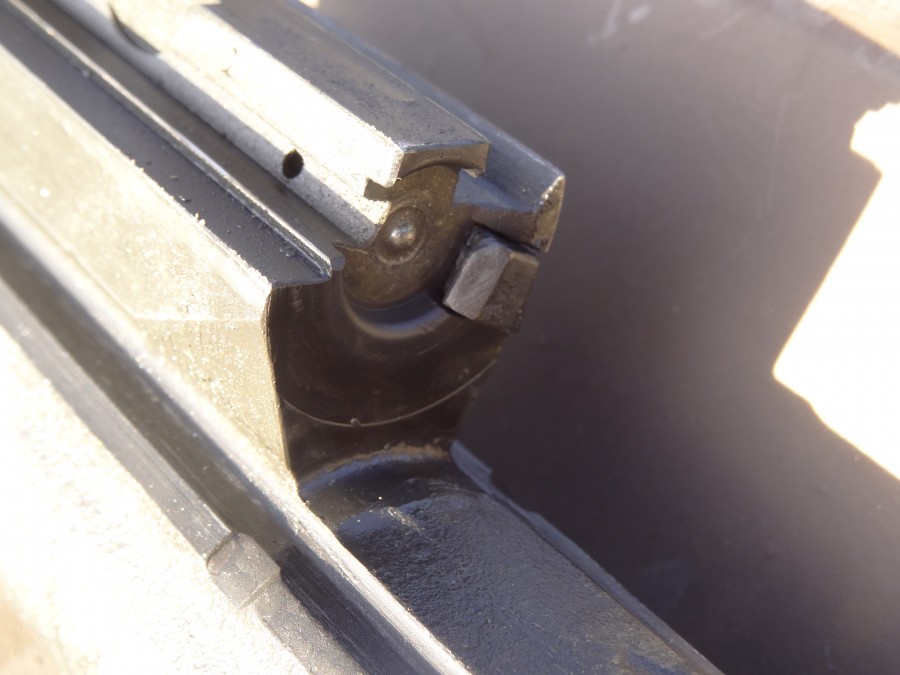
The Walther MP’s dual purpose iron sight also deserves attention. The sight is a long-range aperture sight. A “notch” style CQB sight is etched into the top. With this combination the shooter can take precise shots at longer distances and use the notches on top for instinctive or point shooting.
My shooting experience with the Walther MPK was very pleasant…and all too brief. The weapon can be fired in 2 to 3-round bursts without any effort. Hits were easy to obtain. My only real complaint: the three-position ambi selector switch isn’t nearly as easy to manipulate as an HK MP-5’s. Interestingly, the selector goes from “Safe” (S) to “Full Auto” (D) and then finally to “Semi-Auto” (E).
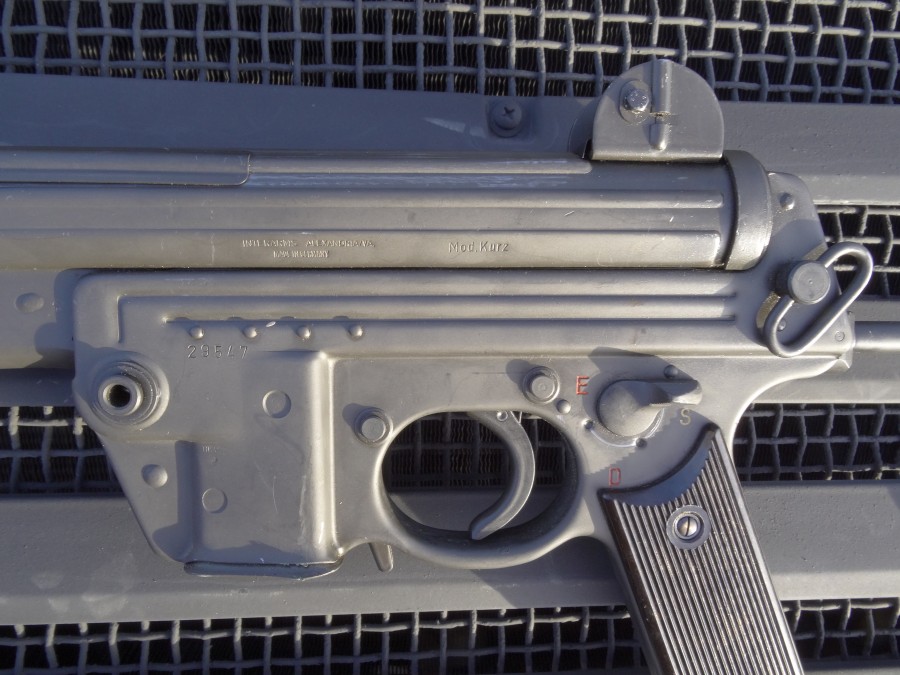
The two photos below show the barrel shroud, chamber, and the non-reciprocating bolt handle:
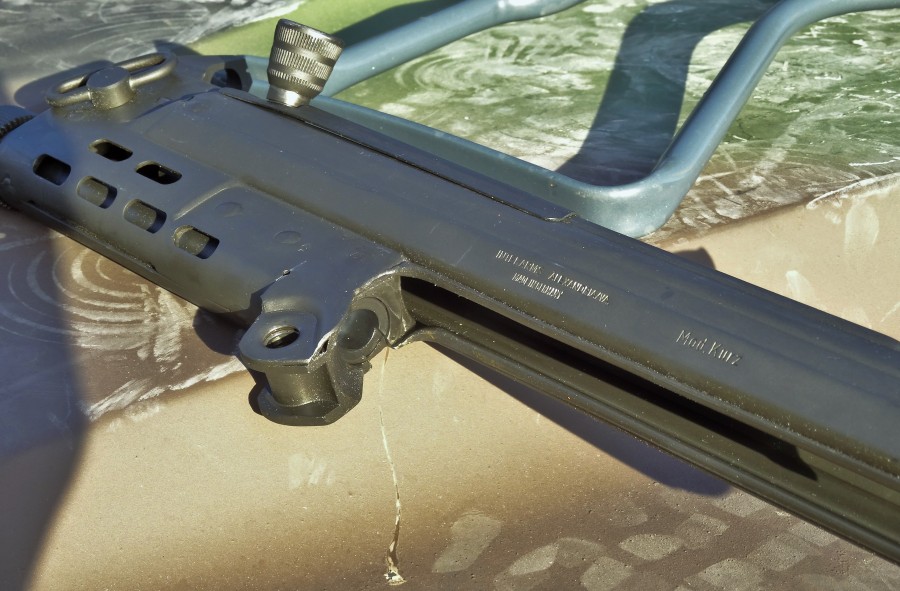
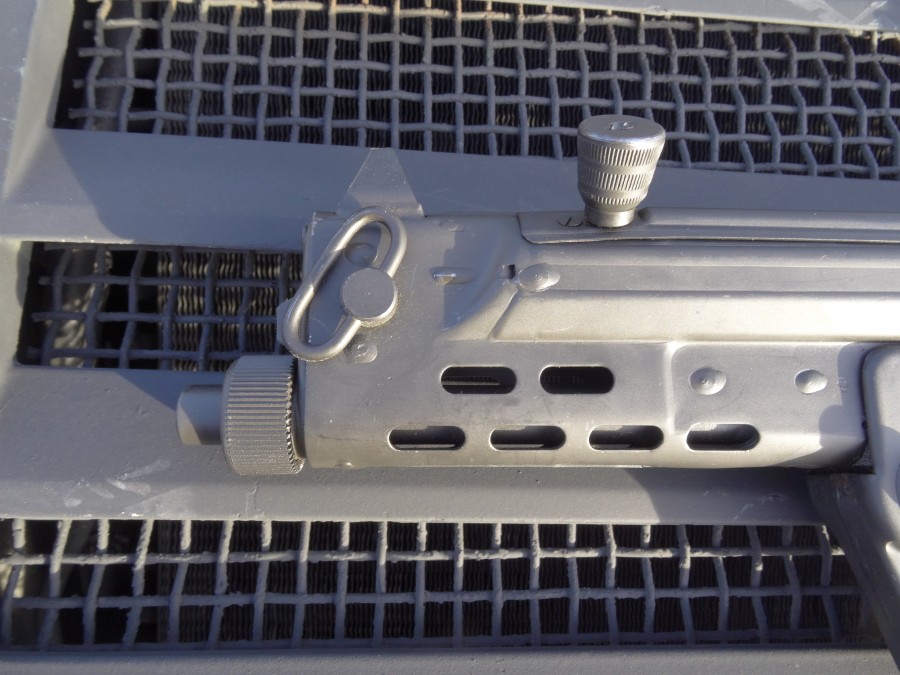
The next photo shows the lower receiver, highlighting the weapon’s use of a simple stamped metal design. Students of the gun will recall that the Germans pioneered the use of stamped metal in SMGs during WWII.

Back then you could shoot 25 rounds through the Walther MP at Battlefield Vegas for $50. Fifty rounds were a relative bargain at $75. Today, no doubt due to Covid-related reduced demand, those prices have actually dropped slightly. But $40/$75 is still a lot of coin.
For those of us who can remember that sad day in Munich, the money buys you a little insight into an interesting question: what if?
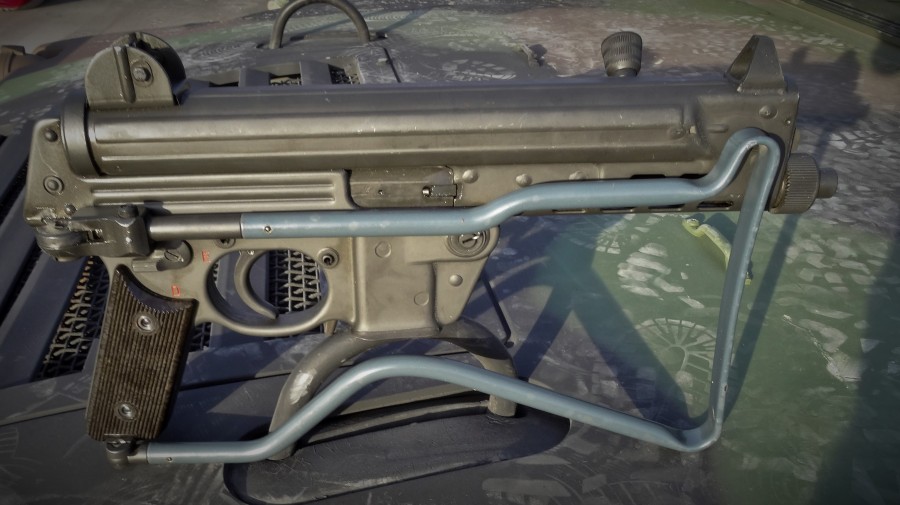
MPL
Caliber: 9×19 mm Luger
Weight unloaded: 3.0 kg
Length (unfolded / folded): 746 / 462 mm
Barrel length: 260 mm Rate of Fire: 550 rounds/min
Effective range: 200 m
Magazine capacity: 32 rounds
MPK
Caliber: 9×19 mm Luger
Weight unloaded: 2.83 kg
Length (unfolded / folded): 659 / 381 mm
Barrel length: 173 mm Rate of Fire: 550 rounds/min
Effective range: 100 m
Magazine capacity: 32 rounds




It’s a neat looking weapon and could be a decent shooter except for the garbage rear sight. Im not kidding when I say the MPL/MPK’s rear sight is quite possibly the worst sight on any SMG ever made. the aperture is about the size of a pencil lead, if not a little smaller; Completely and totally useless in full auto and very frustrating on semi, as trying to re-acquire your target after each round is a chore. The notch “CQB” sight on top isnt much better. Very shallow notch that does nothing to help your eye single out the target and was 5-6 feet high at 50 yards. It’s probably Walther’s biggest fail.
Comments are closed.